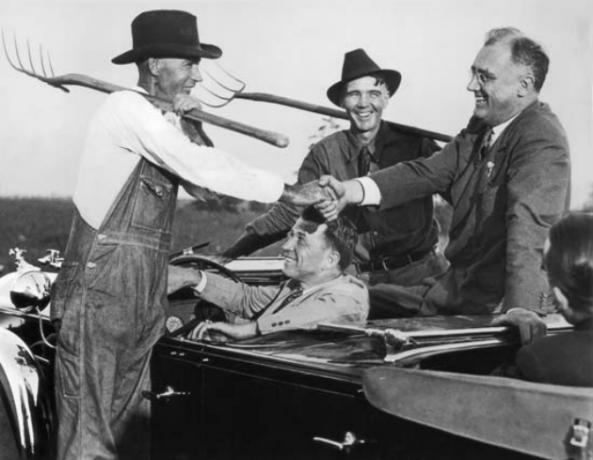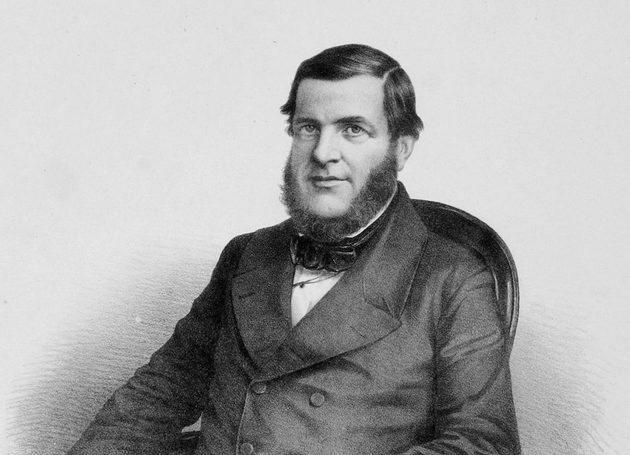O newDeal (from English, “New Agreement”, “New Treaty” or “New Pact”) was a set of economic and social measures to solve the 1929 Crisis.
The plan articulated state and private investments, reforms to adapt various sectors of the economy and stimulate consumption, thus reheating the country's economy.
O New Deal it was carried out between 1933 and 1937 in the United States, with a view to recovering the US economy from the crisis of overproduction and financial speculation that occurred in 1929.
The measures taken during this period sought, above all, the generation of jobs. With this, the government intended to increase the consumption of salaried workers, creating a virtuous cycle of development.
Features

We can highlight some measures of the New Deal:
- Huge investments in public infrastructure works, especially in the construction of roads, railways, hydroelectric plants, bridges, hospitals, schools, airports and popular houses;
- Granting of subsidies and loans to small producers;
- Control of the issuance of coins, parallel to the devaluation of the dollar;
- Supervision and control of the activities of banks and other financial and economic institutions, in order to make fraud and speculation difficult;
- Control of agricultural and industrial production and prices;
- Legalization of unions;
- Reduced working hours to eight hours a day;
- Creation of Social Security and the minimum wage.
Historical context
In 1929, the crisis of overproduction and financial speculation plunged the United States into a deep economic crisis. As the country was one of the main importers in the world, the other countries were also economically disadvantaged.
This deadlock situation has shaken the principles of economic liberalism classic and capitalism itself.
This situation lasted until 1933, when millions of Americans were in poverty, with unemployment rates around 30%.
In turn, in the year 1932, he is elected president of the USA, the Democrat Franklin Delano Roosevelt (1882-1945).
To elaborate the "New Deal", he was inspired by the ideas of the British economist John Maynard Keynes (1883-1946), who defended the State's interference in the economy in order to guarantee social welfare. This thought would later be known as Keynesianism.
Thus, the American president creates dozens of federal agencies to organize various programs to fight poverty and reheat the economy.
As early as 1935, the measures of the new economic pact were already taking effect, pointing to a reduction in unemployment and an increase in workers' income. In turn, industrial production and the generation of new jobs were boosted.
However, opposition to the New Deal it slowed down the program from 1937 onwards, alleging that excessively high public spending and fiscal waivers would increase the public debt.
In the early 1940s, the New Deal it was a success, as it put the US economy on the same level as it was before the crisis.

However, unemployment still reached 15% of the population. Only with the outbreak of Second World War is that the condition of full employment has returned to reign, with an impressive 1% unemployment rate. After all, the war effort and the mobilization of the male population guaranteed work for everyone.
The guidelines of the New Deal will extend until the end of the 1960s-1970s, when the neoliberalism comes into force in the main capitalist economies of the world.
Curiosities
- The US government even destroyed stocks of agricultural commodities to contain the fall in prices (deflation).
- John Maynard Keynes published the "General Theory of Employment, Interest, and Money" (1936) based on New Deal effects.
- O welfare state (welfare state) emerged after the implementation of the New Deal.



